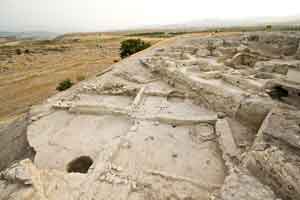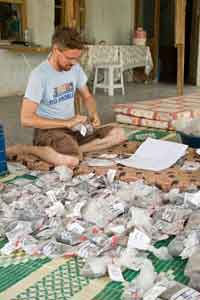
Historical Background
 A view of the Northwest building
A view of the Northwest building with the Stele Building behind
At one of the major turning points in Old World history, the Hattusa dynasty collapsed along with other palatial regimes in the disruptions associated with the Sea Peoples, around 1190 BC, and it is likely that the Tarhuntassa Dynasty did not much outlast them. Across Anatolia strong central control was replaced by local power structures, and places like Kilise Tepe, where the population probably mostly spoke Luwian, may well have been abandoned or have become one of a patchwork of small local centres. Writing had gone with the palace bureaucracies, and historical news of our area has to await tangential references in the inscriptions of 8th-6th century Assyrian and Babylonian rulers, which confirm a fragmented political order with local rulers occupying strongholds in the hills.
Our recent work at Kilise Tepe has concentrated on this era of major transformation. In particular, we wanted to observe the changes in three classes of evidence: the architecture, the ceramics, and the subsistence base as reflected in the animal and plant remains. That changes took place is obvious, and by observing them more closely we hope to shed light on the effects of the presence or absence of centralized government, and see how life changed for the inhabitants of the site in response to events further afield.
